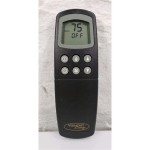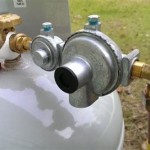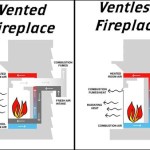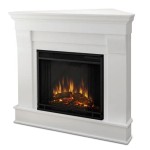Portland Fireplace Inserts: A Comprehensive Guide
Fireplace inserts offer a practical and aesthetically pleasing solution for upgrading existing masonry fireplaces in Portland homes. They enhance heating efficiency, reduce drafts, and offer a safer, more controlled burning experience compared to open fireplaces. Choosing the appropriate fireplace insert requires careful consideration of factors such as fuel type, heating capacity, existing fireplace dimensions, and individual aesthetic preferences.
This article provides a detailed overview of fireplace inserts, focusing on their benefits, types, selection criteria, and installation considerations specific to the Portland climate and building codes. The information presented aims to equip homeowners with the knowledge necessary to make informed decisions about fireplace inserts and their potential to improve home comfort and energy efficiency.
Understanding the Benefits of Fireplace Inserts
Traditional open fireplaces are notoriously inefficient, losing a significant portion of the heat generated up the chimney. This heat loss can lead to higher energy bills and a drafty, uncomfortable living space. Fireplace inserts address this issue by creating a closed combustion system that maximizes heat output and minimizes heat loss.
One of the primary benefits of a fireplace insert is improved heating efficiency. Inserts are designed to radiate heat directly into the room, rather than losing it through the chimney. This controlled combustion process allows for more complete burning of fuel, extracting more heat from each log or pellet. Consequently, homeowners can experience a noticeable reduction in heating costs, particularly during Portland's colder months.
Beyond efficiency, fireplace inserts offer enhanced safety compared to traditional open fireplaces. The enclosed design prevents sparks and embers from escaping into the room, reducing the risk of accidental fires. Furthermore, many inserts feature safety features such as overheat protection and automatic shut-off mechanisms. Chimney fires are also less common with properly installed and maintained inserts due to the more controlled combustion process and reduced creosote buildup.
In addition to practicality, fireplace inserts can significantly enhance the aesthetic appeal of a living space. They are available in a wide range of styles, from traditional to contemporary, allowing homeowners to customize the look of their fireplace to match their existing decor. Many inserts feature glass doors that provide a clear view of the flames, creating a cozy and inviting ambiance. The customization options extend to the materials and finishes, allowing for a seamless integration with the surrounding room.
Exploring the Different Types of Fireplace Inserts
Fireplace inserts are categorized based on the type of fuel they utilize. The most common types include wood, gas, and electric inserts, each offering distinct advantages and disadvantages. Understanding the characteristics of each type is crucial for selecting the appropriate insert for individual needs and preferences.
Wood-Burning Fireplace Inserts: Wood-burning inserts offer a traditional fireplace experience, providing the warmth and ambiance of a real wood fire. These inserts are generally more affordable to operate than gas inserts, assuming wood is readily available and purchased at a reasonable price. However, wood-burning inserts require regular maintenance, including wood storage, ash removal, and chimney cleaning. Modern wood-burning inserts are designed to be highly efficient, meeting stringent EPA emission standards, which contribute to cleaner burning and reduced environmental impact.
Gas Fireplace Inserts: Gas fireplace inserts provide convenience and ease of use. They can be fueled by natural gas or propane, and often feature remote control operation, allowing for easy temperature adjustment and on/off control. Gas inserts require a gas line connection, which may necessitate professional installation. While gas inserts typically have higher initial purchase costs and operating costs (depending on gas prices) compared to wood-burning inserts, they offer a cleaner and more convenient heating option. They also require less maintenance than wood-burning inserts, typically needing annual inspections and occasional cleaning.
Electric Fireplace Inserts: Electric fireplace inserts offer a simple and versatile heating solution. They require no chimney or venting, making them relatively easy to install. Electric inserts simulate the appearance of a real fire using LED lights and reflective surfaces. They provide supplemental heat and aesthetic appeal without the need for fuel storage or combustion. While electric inserts offer convenience and affordability, they typically produce less heat than wood or gas inserts and may result in higher electricity bills if used as a primary heating source. Their primary advantage is the ability to provide ambiance without heat, making them suitable for year-round use.
Factors to Consider When Choosing a Fireplace Insert in Portland
Selecting the right fireplace insert for a Portland home involves careful consideration of several key factors. These factors include the size and configuration of the existing fireplace, the desired heating capacity, local building codes and regulations, and individual aesthetic preferences.
Fireplace Dimensions and Compatibility: The dimensions of the existing fireplace opening are crucial for determining the appropriate size of the insert. It is essential to measure the height, width, and depth of the fireplace opening accurately before selecting an insert. The insert must fit properly within the fireplace opening to ensure proper installation and safe operation. A qualified installer can provide accurate measurements and advise on compatible insert models.
Heating Capacity and Efficiency: The heating capacity of a fireplace insert is measured in British Thermal Units (BTUs). The appropriate BTU rating depends on the size of the room or area the insert is intended to heat. A larger room will require a higher BTU rating. It's also important to consider the insulation levels of the home when determining the required heating capacity. Homes with poor insulation will require more BTUs to maintain a comfortable temperature. Energy-efficient inserts with high efficiency ratings will provide more heat with less fuel consumption, resulting in lower operating costs.
Compliance with Local Building Codes and Regulations: Portland has specific building codes and regulations regarding fireplace inserts, including requirements for permits, inspections, and emissions standards. It is essential to ensure that the chosen insert meets all applicable local codes and regulations before installation. Consulting with a qualified local contractor can help navigate these requirements and ensure compliance. Specifically, the EPA certification for wood-burning inserts is crucial to confirm. Gas inserts also need to comply with local gas line installation codes.
Cost and Budget Considerations: The cost of a fireplace insert includes the purchase price of the insert, installation fees, and ongoing operating costs. Wood-burning inserts typically have lower initial purchase prices, but require ongoing expenses for wood and chimney cleaning. Gas inserts have higher initial costs but require less maintenance. Electric inserts are generally the least expensive to purchase, but may result in higher electricity bills. It is important to establish a budget that considers all of these factors before making a purchase decision. Requesting quotes from multiple installers and considering long-term operating costs can help in making an informed financial decision.
Aesthetic Preferences: Fireplace inserts are available in a wide range of styles and finishes, allowing homeowners to customize the look of their fireplace to match their existing decor. Factors to consider include the style of the insert (traditional, contemporary, modern), the color and finish of the surround, and the type of glass used for the door. Choosing an insert that complements the overall aesthetic of the room will enhance its visual appeal and create a cohesive design.
Ventilation Requirements: Proper ventilation is crucial for the safe and efficient operation of fireplace inserts. Wood-burning inserts require a chimney liner to vent exhaust gases safely. Gas inserts may require either a chimney liner or direct vent system, depending on the model. Electric inserts do not require any venting. A qualified installer can assess the existing chimney and determine the appropriate ventilation system for the chosen insert.
Professional Installation: While some homeowners may consider DIY installation, professional installation is highly recommended for fireplace inserts. A qualified installer has the expertise and experience to ensure that the insert is installed correctly and safely, complying with all applicable building codes and regulations. Professional installation also protects the manufacturer's warranty and ensures optimal performance of the insert. Improper installation can lead to safety hazards, such as carbon monoxide leaks or chimney fires.
In conclusion, selecting and installing a fireplace insert in Portland requires careful planning and attention to detail. By understanding the benefits of inserts, exploring the different types available, and considering the key factors outlined above, homeowners can make informed decisions that enhance their home's comfort, efficiency, and aesthetic appeal. Consulting with qualified professionals throughout the process is essential to ensure a safe and successful installation.

Gas Fireplace Inserts Portland Or Nw Natural Appliance Center

Fireplace Inserts Nw Natural Appliance Center

Heat N Glo Simplifire Electric Insert On Display Now Our Best Ing Portland Fireplace

Kozy Heat Fireplaces And Inserts Portland Or Nw Natural Appliance Center

Regency Hampton Hi1150 Wood Insert In Timberline Brown Portland Fireplace

Indoor Outdoor Gas Fireplaces Portland Or Nw Natural Appliances

Gas Fireplace Inserts Portland Oregon Hometown Hearth And Grill

Regency Energy Large Gas Insert E33 Portland Fireplace

Striker C160 Wood Insert Portland Fireplace

Gas Fireplace Stove And Insert Installation Portland Or American
Related Posts








